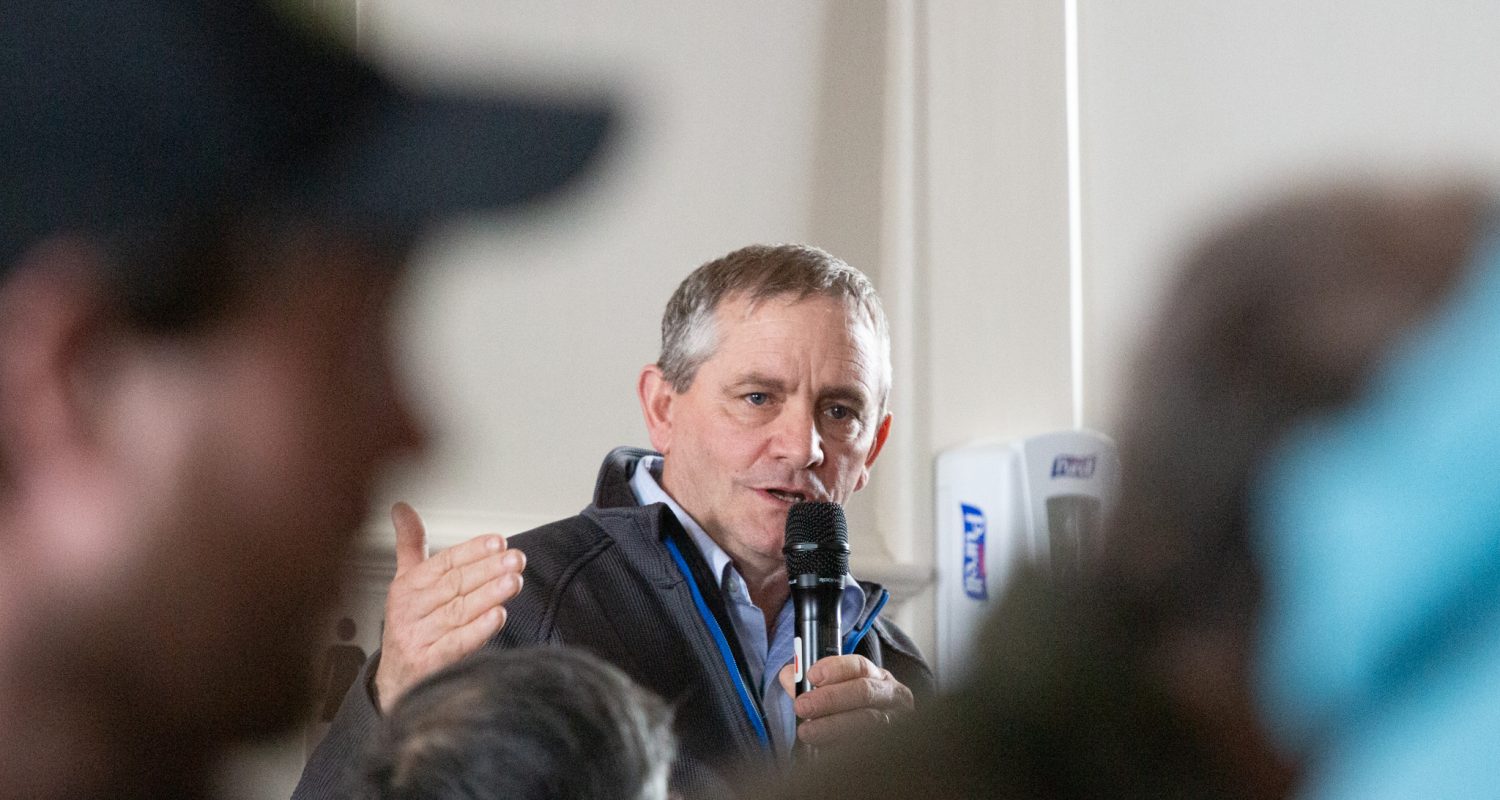
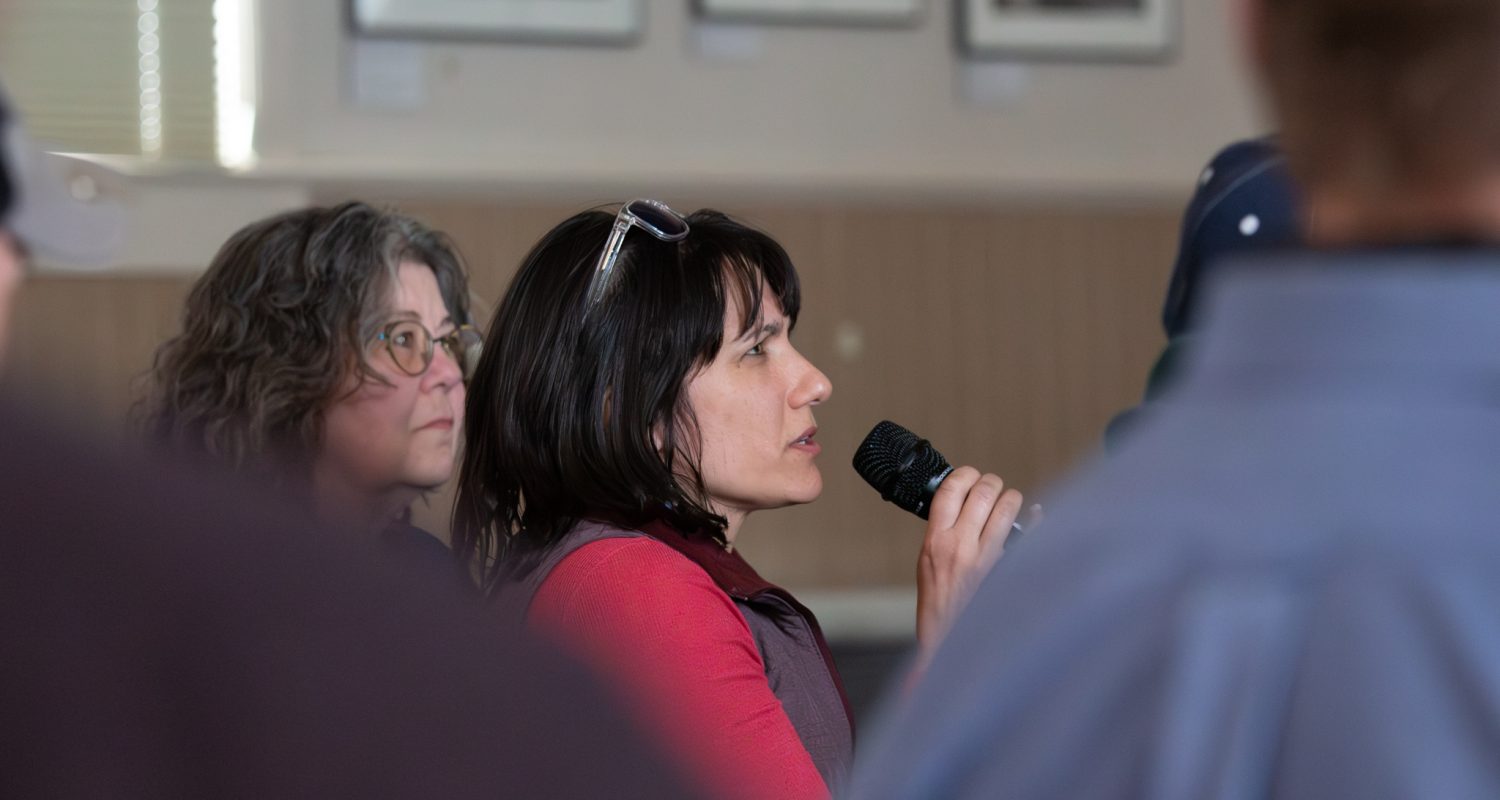
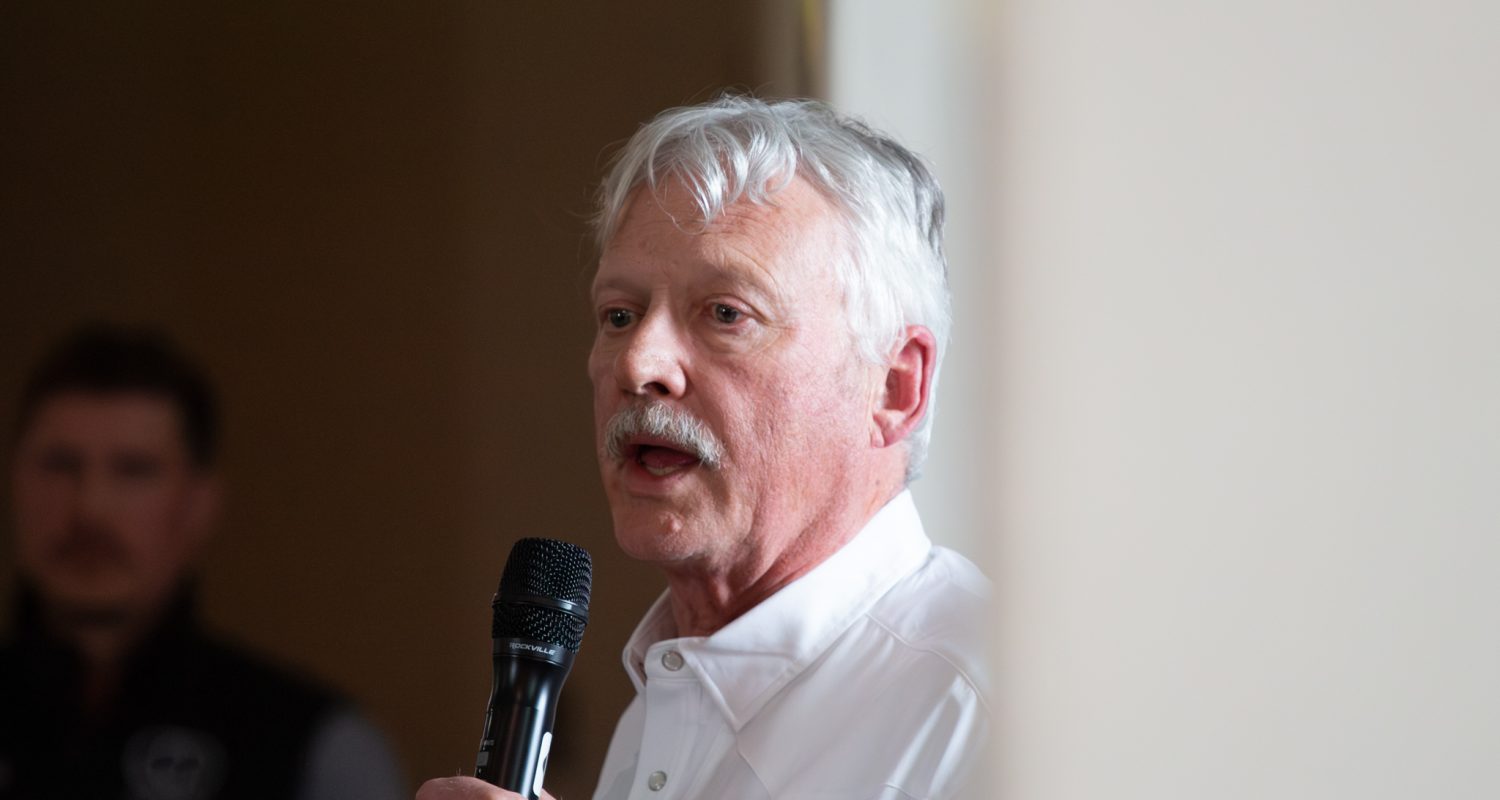
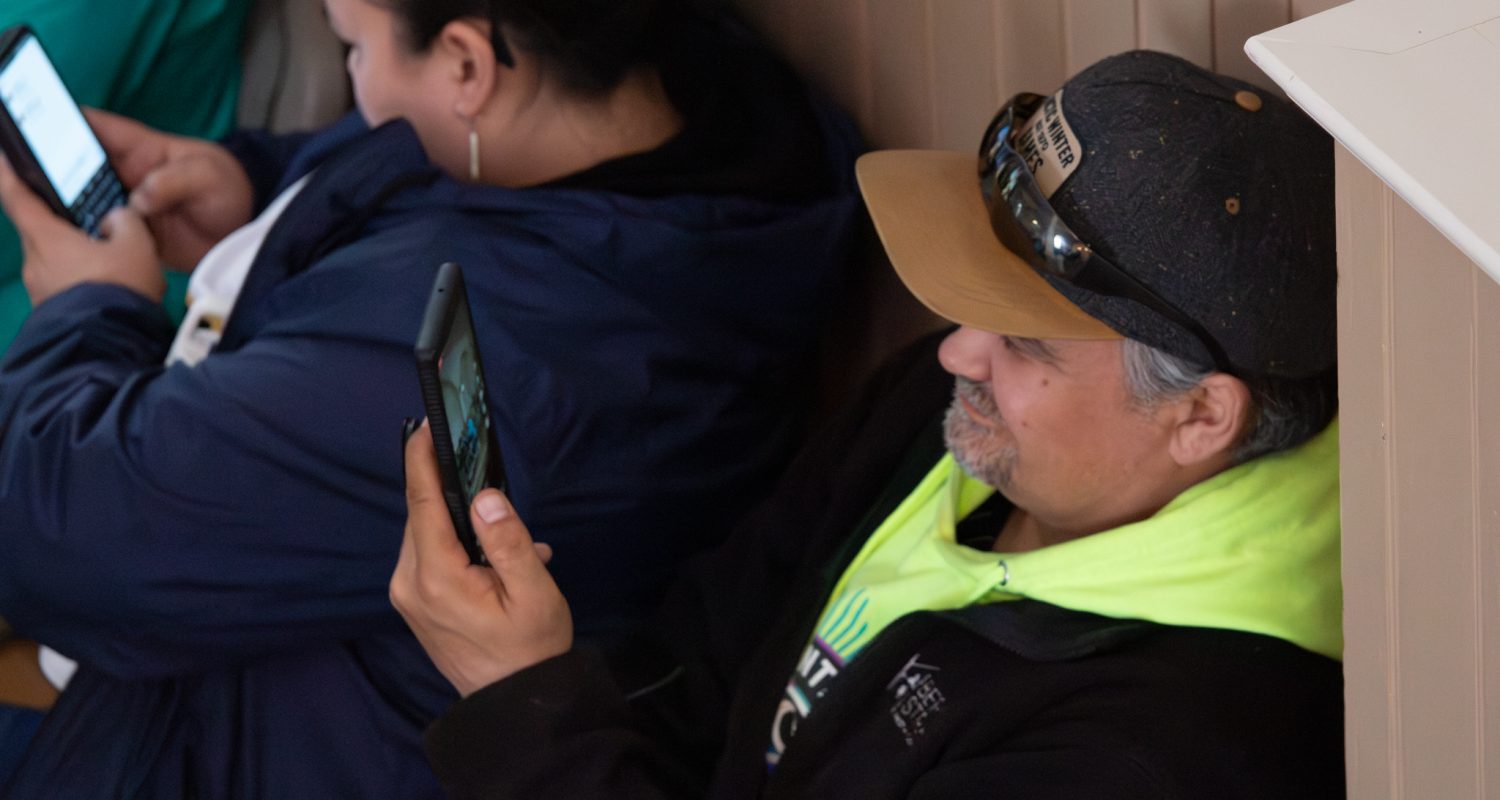

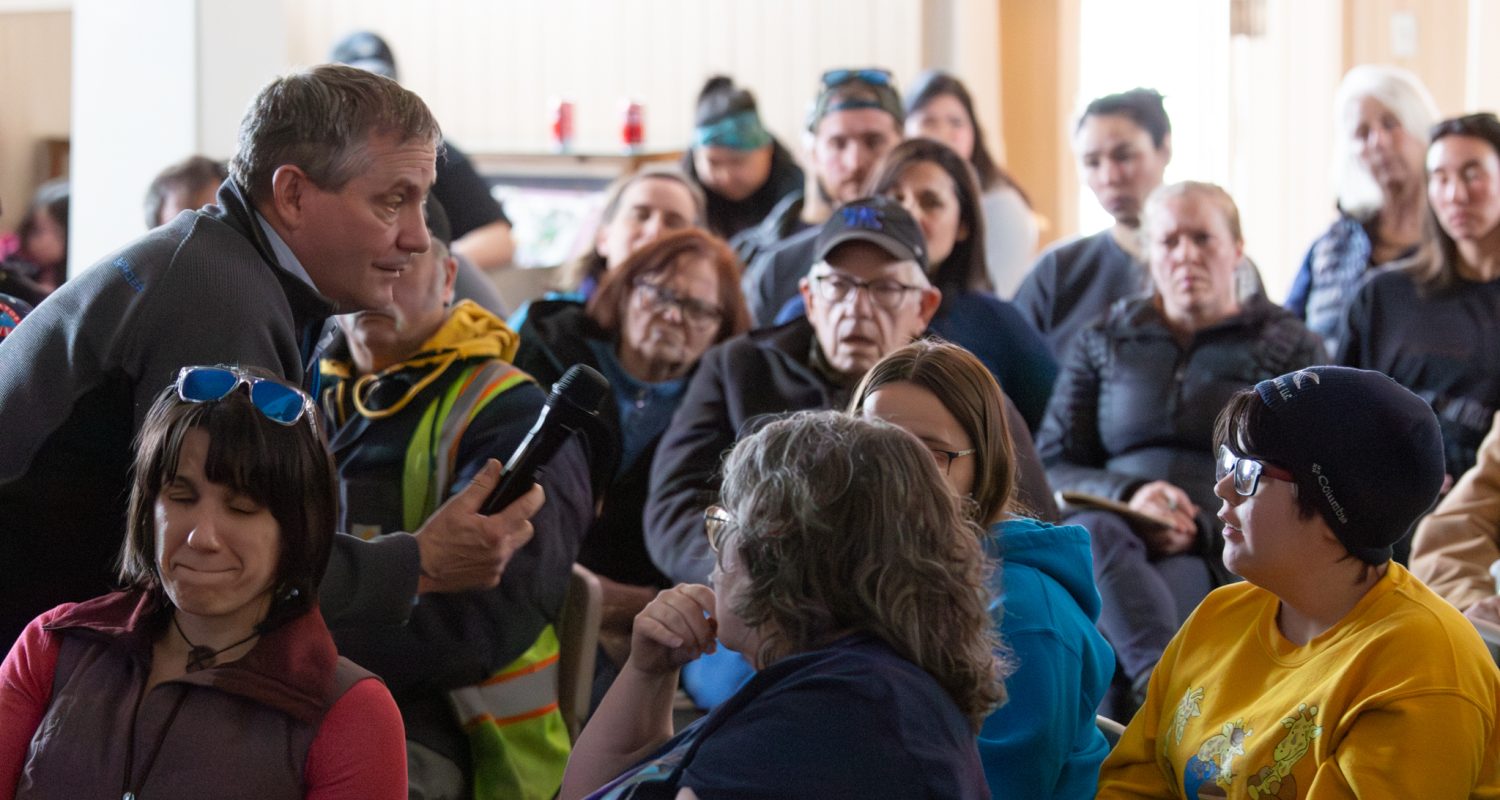
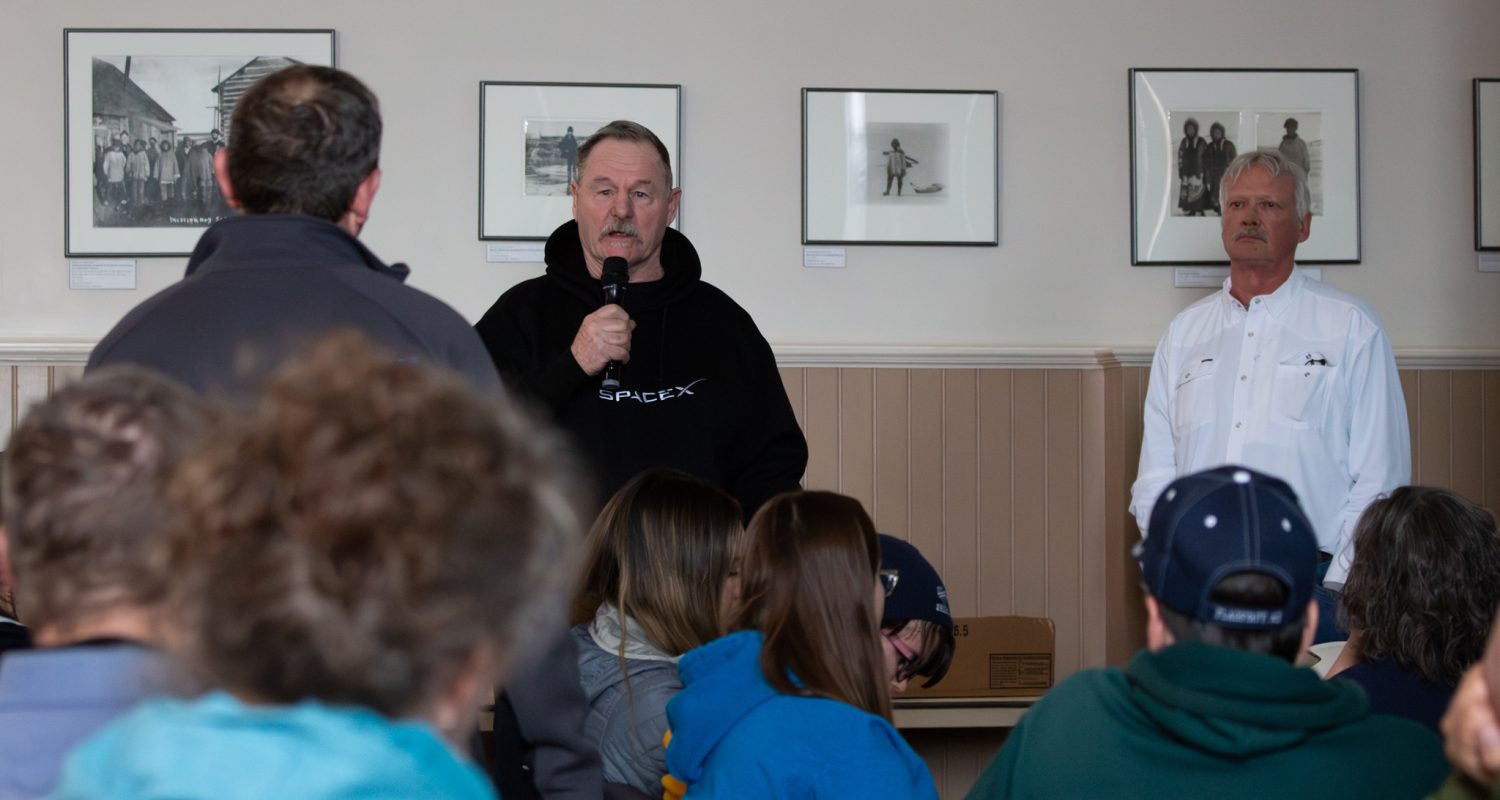
As the last of extra chairs—hastily distributed to accommodate the unexpectedly large turnout—were filled, a projector screen glowed at the front of the room. Over 60 people gathered at Old St Joes to hear an update from Graphite One, a company building a mine to the north of Nome near the Imuruk Basin. The project promises economic revitalization but also poses significant environmental questions, impacting the future of Nome and its surrounding lands.
Mike Schaffner, Senior Vice President of Mining for Graphite One, opened the presentation with remarks about the growing demand for graphite mining and processing.
“The reason there’s such a push on graphite is obviously the big increase in electric cars, and the drive to decarbonize the environment so that we could stop global warming.” Schaffner said.
The demand for domestic graphite production goes beyond supplying the critical ingredient in electric vehicle batteries. The U.S. currently imports all of its graphite from China, presenting a potential national security vulnerability. In July 2023, Graphite One was awarded a $37.5 million grant from the U.S. Department of Defense. These funds, delivered through the Defense Production Act, highlight the sense of urgency from the federal government to broaden its supply chain.
Graphite mined in Alaska will be transported to a new facility Graphite One is building on leased land in Niles, Ohio. There, the minimally-processed graphite will be refined and manufactured into graphite anodes. These anodes are a crucial component in lithium-ion batteries, serving as the electrode through which electrons enter the battery during the charging process. Made primarily from graphite, they are favored for their high electrical conductivity, robustness, and ability to maintain their integrity over numerous charging cycles.
Increased Output

Some aspects of Graphite One’s plan shared at last year’s public forum have changed following conversations with large automobile manufacturers. Schaffner met with representatives from Tesla, Chevy, and Ford for negotiations that led to an increase in production targets.
“We’re gonna make 50,000 tonnes of graphite at this rate. They all said ‘great, but we need 20 of you’. So when we took the tonnage up to 10,000 tonnes per day and went back to them, they said, ‘Okay, let’s talk. This is big enough that we want to do business with you.’” Shaffner said.
The plans presented during the preliminary feasibility study stage of the project called for production of 2,760 tonnes of ore per day. The new sum represents a four-fold increase in production, causing other parts of the project to expand as well.
Haul trucks running from the mine to the Port of Nome will now have capacity for 150 tons, three times the size initially planned. With the mine operating around the clock, haul trucks are expected to run the 37 mile route that utilizes Kougarok Road 18 times– there and back. The number of employees anticipated to operate the mine has also grown from 155 to 170. Plans include upgrading and potentially expanding the road to accommodate increased traffic and heavy machinery. This would involve widening and reinforcing the roadbed and improving the surface.
Concerns from the Community
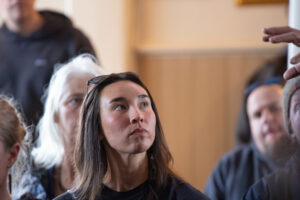
Following a presentation that lasted just over an hour community members were offered a chance to ask questions from the Graphite One team. A common theme of the questions raised were the potential environmental impacts of the mining operation, especially on water quality and local wildlife. Kerry Ahmasuk was born and raised in Nome and sat near the back of the hall. She was joined by two friends wearing matching sweaters bearing the phrase, “No One for Graphite One, Protect the Kigs”, a reference to the Kigluaik Mountains the mine will be built near.
“It’s a scary thought to see this mine go through because the location itself is key to our subsistence way of life. The Imuruk Basin carries all of our fish to the Pilgrim River which is one of our rivers that supply our red salmon.” Ahmasuk said.
Ahmasuk was worried about the long term impacts of the mine.
"365 days a year, that’s huge for 23 years. I’m worried about the noise impact, it would push away animals, all of the species that we go hunt. Not just Nome, but Brevig and Teller and that’s a huge part of their life and surviving. We don’t have big stores, especially in the village to get meat and veggies. We get a lot of our plants off of the land.”
-Kerry Ahmasuk
Concerns over interruptions to subsistence activities such as berry picking or hunting were addressed by Kevin Torpy, Graphite One’s Vice President of Operations.
“We need to really understand what the subsistence use patterns are. Run it by local people, what they eat, where they get it. This is all part of the EIS [Environmental Impact Statement] process to make sure that we do everything we can to make sure that the local subsistence needs aren’t disrupted by this project.” Torpy said.
Graphite One convened a Subsistence Advisory Committee to incorporate local knowledge into planning. The committee composed of representatives from organizations around the region will convene bi-annually during the feasibility study and permitting stages of the project. Once construction begins the committee will meet with Graphite One four times per year.
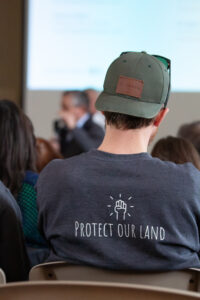
Klay Baker, also born and raised in Nome, joined Ahmasuk at the public forum. Baker is a graduate of the University of Alaska Fairbanks, where he studied Natural Resource Management. He expressed concern about unforeseen impacts to the wildlife living near the road.
“Roads really are scars on the environment and on the land out here. We’re thankful for the road system we have, but it’s already more than enough. I didn’t see any sort of mention on how it would affect moose or winter bear dens in that area, especially with all the noise they’re going to be making.” Baker said.
Ed Fogels, the project’s Permitting Manager, outlined the extensive permits required to move the project into operational status. The mine would need to receive permits from the U.S. Army Corps of Engineers, Alaska Department of Environmental Conservation, Alaska Department of Natural Resources, as well as the State Historic Preservation Office. Permitting is expected to begin in the first quarter of 2025.
Once mining begins, haul trucks also have the potential to create large clouds of dust as they travel along the road. This creates potential problems for subsistence activities such as berry picking. Graphite One plans on creating a dust mitigation plan to address this issue.
“If you know what you’re doing it’s relatively straightforward. You can water the roads, you can treat them, most of the dust in this project will come from travel on dirt roads. We have to have a dust mitigation plan in place.” Fogels said.
Sean Solie is a project manager at Uqaqti Consulting, a firm Graphite One hired to help with community relations. Solie hopes that by developing a local workforce environmental impacts may be lessened.
“Your best workers are your local workers, and I think we can all speak to that. If you disturb the ground or do something in your own home, or on your own land, you care about it. So you’re gonna go back and make sure things are done, right. You’re going to take the right measures and be good stewards of that land.” Solie said.
Impacts on the Economy
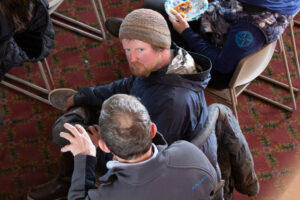
The mine is expected to have significant economic implications for Nome and its neighboring communities. The project will create a wide range of job opportunities in mining operations, administration, environmental monitoring, and other related fields. These jobs could help reduce local unemployment rates. In addition to direct employment, Graphite One has plans to offer local workforce training programs aimed at developing skills relevant to mining and processing activities.
The Bering Straits Native Corporation (BSNC) has invested $2 million into Graphite One with the option to invest an additional $6 million at a later date. This agreement entitles BSNC a seat on Graphite One’s Advisory Board and secured a variety of other benefits for regional communities. These benefits include scholarships to support careers in mining related fields.
“What we want to do now is start working with the young people, getting them going through school, learning the right careers so that they can work here. It worked well signing on with BSNC, because that’s their objective, to make sure there’s good jobs in the community.” Schaffner said.
There is verbiage in the agreement giving preference to qualified BSNC shareholders for hiring as well as preference towards BSNC-owned businesses for services and materials.
Following a series of permit approvals, construction of the mine is slated to begin in 2027. Graphite One expects the mine to be operational by 2029.




